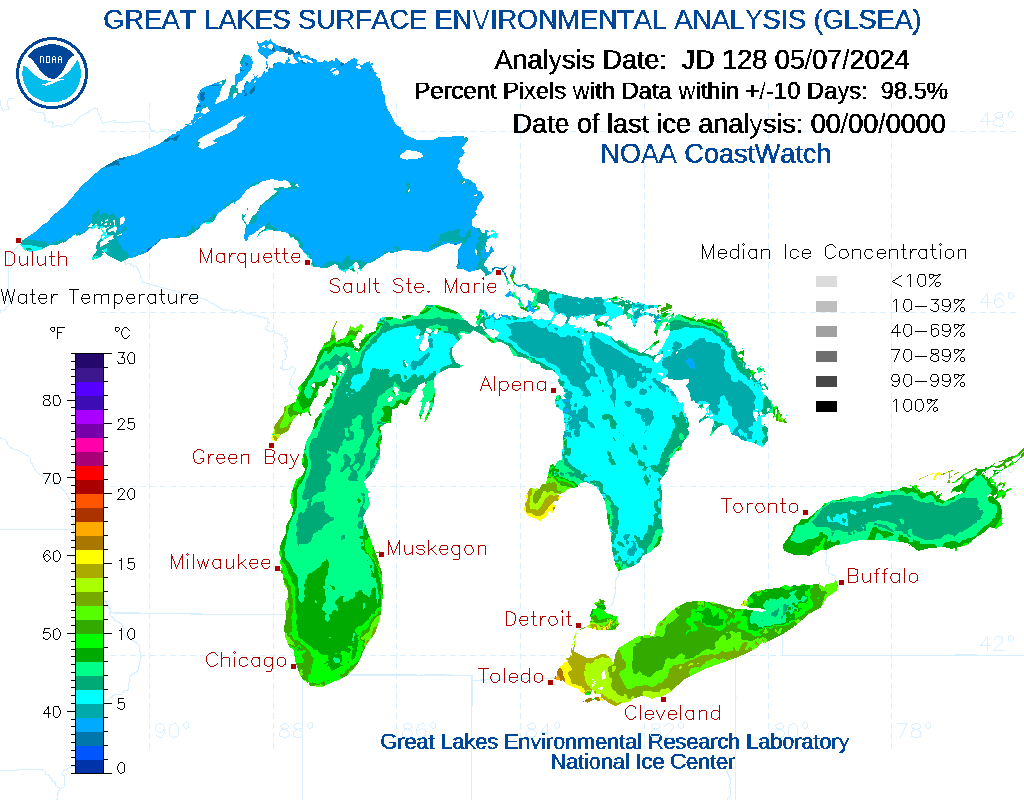GLSEA full resolution images of the day
ACSPO GLSEA Color Contour GLSEA3

Related files
Historic color contour animations
Historic ACSPO GLSEA animations
Documentation
The Great Lakes Surface Environmental Analysis (GLSEA) is a digital map of the Great Lakes surface water temperature and ice cover which is produced daily. The lake surface temperatures are satellite-derived from NOAA Advanced Very High Resolution Radar (AVHRR), Visible Infrared Imaging Radiometer Suite onboard the Suomi National Polar-Orbiting Partnership spacecraft (VIIRS S-NPP), and NOAA-20 Visible Infrared Imaging Radiometer Suite ( VIIRS NOAA-20) imagery obtained through the NOAA Great Lakes CoastWatch program. Ice cover concentration is added using data provided by the National Ice Center. Lake surface temperatures are updated daily with information from the cloud-free portions of the previous day’s satellite imagery (+/- 10 days). If no satellite imagery is available, a smoothing algorithm is applied.
Developed GLSEA
The ACSPO GLSEA is the developed product that uses the Advanced Clear-sky Processor for Oceans (ACSPO) L3S-LEO SST as the input data source. The L3S-LEO SST is the level 3 Super Collated data from Low Earth Orbit satellites sensor including NPP, N20, and MetOp A/B/C.
Algorithm for GLSEA
- Get GLSEA from previous day.
- Get all SST images from +/- 10 days (20 day window).
- Geocorrect SST images and apply cloud mask.
- For each cell in GLSEA:
- Get all SST values for this cell from +/- 10 days (20 day window).
- If there are more than 2 values in +/- 10 day window, calculate mean and standard deviation, eliminate values more than 2 standard deviations away from mean.
- If there are both a prior SST value and a subsequent SST value for this cell within +/- 10 day window, then linearly interpolate in time, else if there is at least one SST value for this cell within +/- 2 days, use it.
- For any pixel not filled in Step 4:
- If there are at least 6 SST values that have been filled in Step 4 in the surrounding 5×5 cells, use the average of the surrounding cells for this cell, else fill this cell with value of cell from previous day plus change in lakewide mean.
- Calculate lakewide mean for each lake and save GLSEA
